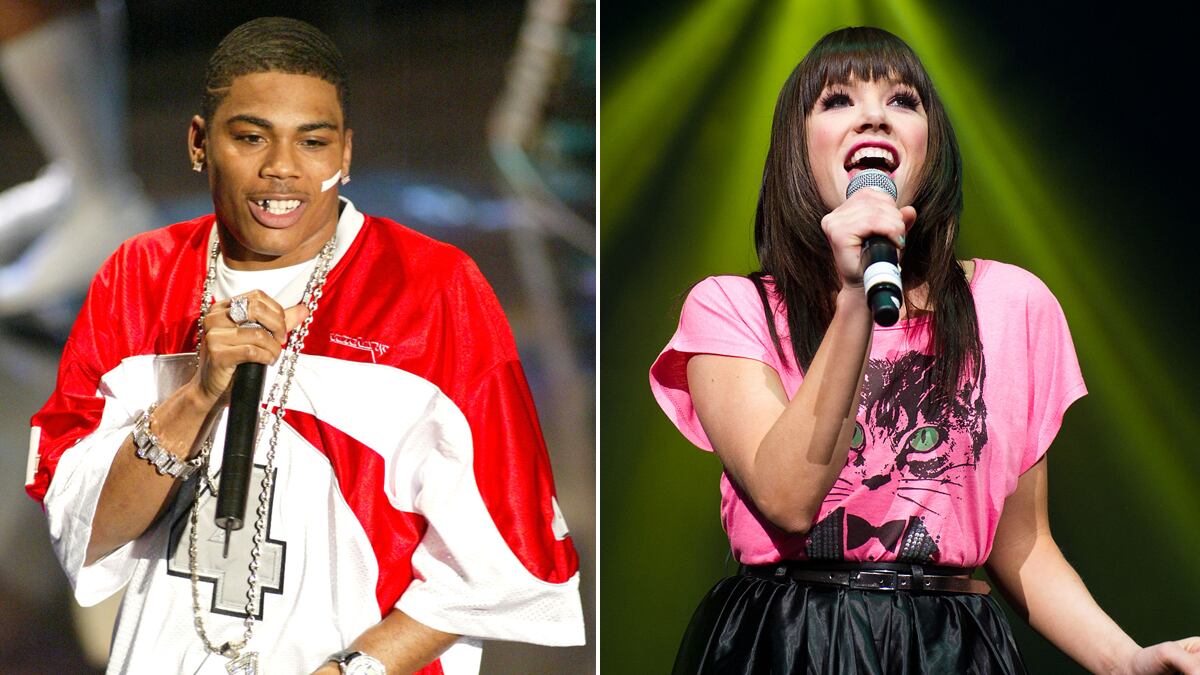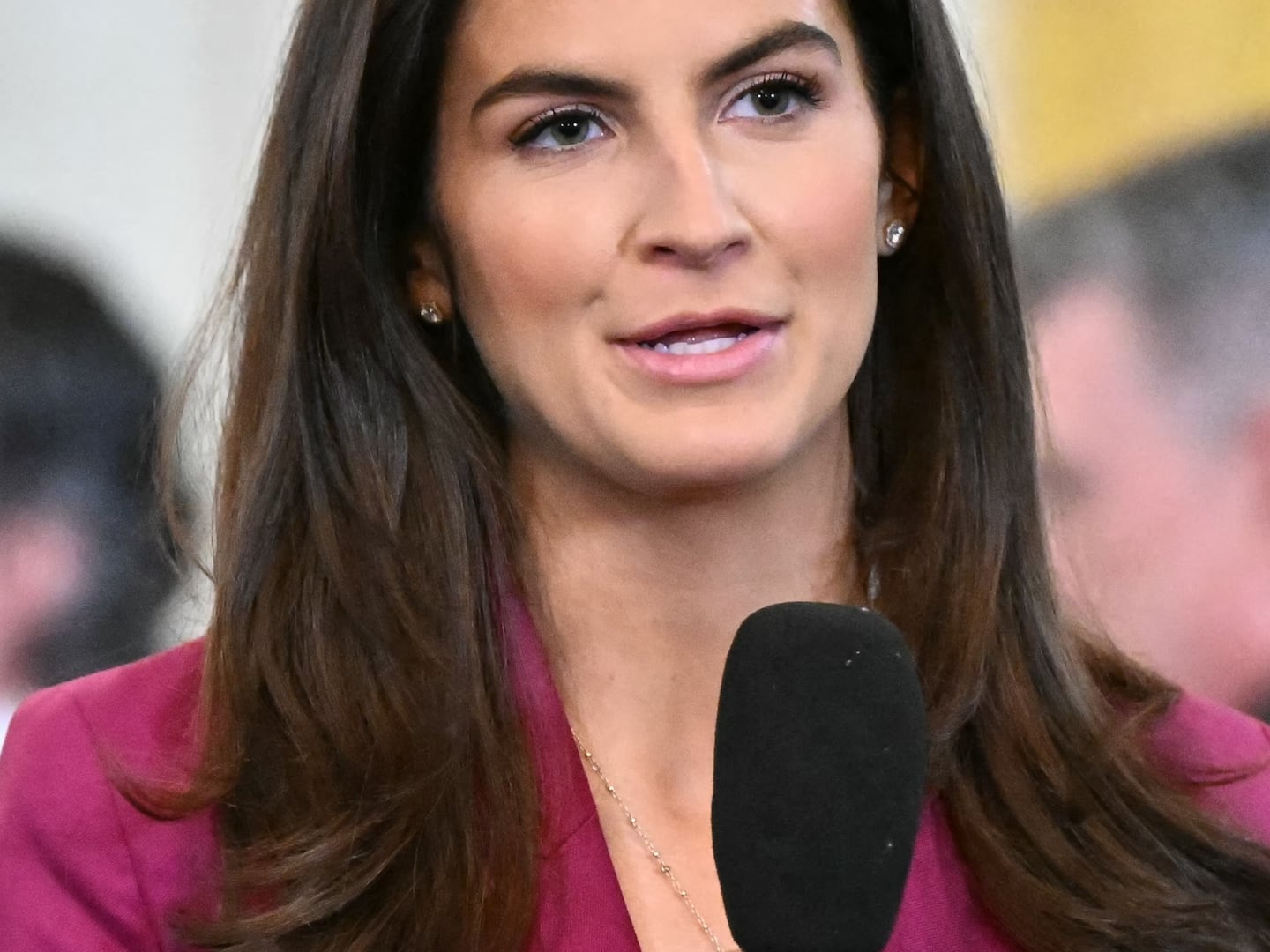A decade ago, rapper Nelly’s “Hot in Herre” enjoyed its run as America’s unofficial song of summer. And while that anthemic party banger and this year’s inescapable song of the season, Carly Rae Jepsen’s “Call Me Maybe,” both benefited from blanket radio play, their respective paths to the forefront of pop consciousness could not have been more different.
“Hot in Herre,” though it would eventually become the song of summer 2002, was released in April, as the lead single off Nellyville, the Texan rapper’s second album. Jepsen, meanwhile, began her song of summer 2012 bid as a newcomer in the United States, despite having placed third across the border on Canadian Idol in 2007. A look at how the two songs became smashes provides a handy primer on almost all the ways the music industry has seismically shape-shifted over the past 10 years.
Jepsen’s effervescent megahit has been driven almost entirely by its Internet sales, hitting No. 1 on the iTunes charts in 37 countries on its way to racking up more than 7.3 million downloads and claiming the most consecutive weeks atop Billboard magazine’s Hot 100 chart of any single released this year. Nelly, of course, did not sell a single download of “Hot in Herre”—iTunes would not be launched until 2003. The song hit No. 1 on the Hot 100, the rapper’s fourth single to do so, and stayed on the chart a staggering 26 weeks, also topping three other Billboard charts.
The triumph of “Call Me Maybe” was hardly old-fashioned, coming courtesy of its viral spread through social media online.
Justin Bieber signed the 26-year-old Jepsen to his Schoolboy Records imprint in early 2012 and hipped his Beliebers to the singer with some well-placed tweets about how much he enjoyed “Call Me Maybe.” In February the teenage heartthrob shot a seemingly homemade clip of himself, girlfriend Selena Gomez, singer Ashley Tisdale, and members of tween pop sensation Big Time Rush goofing around and lip-syncing to the song.

In turn, that clip, which has since been viewed more than 10 million times, inspired legions of copycat videos from across the cultural spectrum, with contributions from the U.S. Olympic swim team, Cookie Monster, Joan Rivers, and James Franco, among others, helping “Call Me Maybe” create a shadow economy unto itself.
At last unofficial count, there were more than 800 parodies of the inescapable ditty, which have certainly, albeit unquantifiably, supplemented Jepsen’s bottom line and helped the song achieve a kind of critical mass in popular culture.
Even President Obama took notice of a parody created using news footage to make it appear that he was singing “Call Me Maybe.” “I have to admit, I’ve never actually heard the original version of the song,” the president said earlier this month in an interview with New Mexico’s KOB-FM. “I saw this version where they spliced up me from a whole bunch of speeches that I made. They kind of mashed together an Obama version of it.”
He added: “It looks like a cute pop song.”
Today, with more than 221 million YouTube views and counting, Jepsen’s official “Call Me Maybe” video ranks as one of the most seen clips in Web history, not to mention a nice ancillary stream of income for the singer. At YouTube’s pay rate of $0.0033 per view, that’s $729,300 in bubblegum money. Nelly, meanwhile, did not get a single YouTube view for “Hot in Herre” in 2002—the website would not be created until 2005.
The rapper promoted “Hot in Herre” the old-fashioned way: by playing it live for fans. His 2002 Nellyville North American tour was that year’s seventh most lucrative touring event by any pop artist. And his 46 live engagements netted the rapper $11 million. (Jepsen will not tour until the fall, opening up for Bieber’s 45 North American arena dates and performing for about 675,000 fans.)
But the most shocking metric in this tale of the tape has to be the number of copies of “Hot in Herre” Nelly sold in 2002—a figure almost impossible to reconcile with a song that has become a touchstone of its time and can still trigger dance-floor stampedes at weddings.
The rapper moved a mere 52,000 physical copies of the song, according to Nielsen SoundScan, a result of the state of the music industry at the time of its release. Back then, CD singles were an afterthought; music fans bought albums. And Nellyville, the album on which “Hot in Herre” appears, functions as the real barometer of the song’s popularity, having sold 6.5 million copies.
Earlier this month, rapper Flo Rida’s “Whistle” finally ended Jepsen’s nine-week reign atop the Hot 100, bumping her to No. 3. But in all the ways that really make an artist count in today’s highly fragmented, weirdly monetized music world—Twitter chatter and the cosign of a megastar as well as pop culture’s “stickiest” offering: the parody video—“Call Me Maybe” counts as 2012’s towering pop achievement.
The question is, will it still be triggering dance-floor stampedes in a decade?






